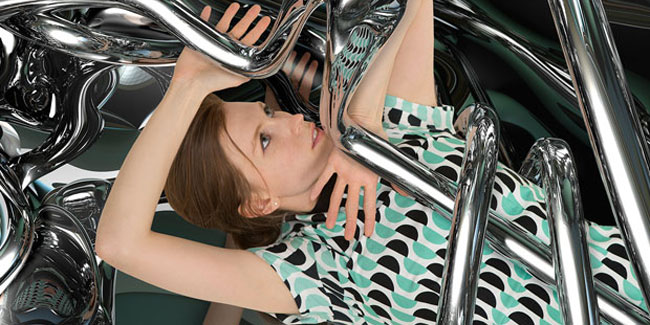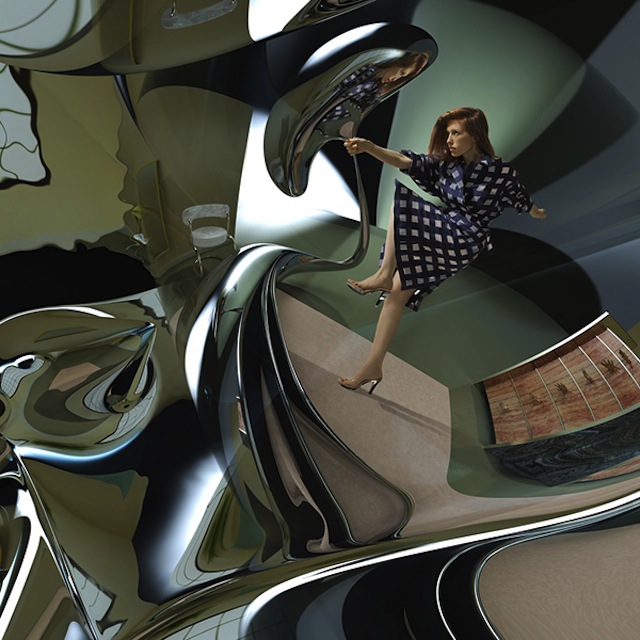While living in Los Angeles during 2010, Cameron Mesirow released Ring, her debut album as Glasser. She has since moved to downtown Manhattan in New York where she more or less became obsessed with the city’s architecture, particularly its interiors, which she likely found comforting, being admittedly agoraphobic. Aside from the city’s architecture itself, her new album, Interiors, was inspired by a 1978 book on the subject, Delirious New York, by Dutch theorist Rem Koolhaas. In his book, Koolhaas argues that Manhattan’s architecture is derived from the most rational possible pursuit of the irrational. It’s an interesting statement to consider when listening to Interiors, which would seem to find Mesirow trying to make rational compositions about not just architecture but something that can be entirely irrational: human emotions. To that end, the Amazon product description of the album indicates that Interiors’ central themes are “love and anxiety and the spatial constraints of both in the landscape of one’s life.”
Mesirow recorded Interiors in a Manhattan studio without any windows. One imagines that she would have enjoyed the confined space, which is probably why working in such a setting did not result in songs that feel confined themselves. Rather than feeling claustrophobic, her songs feel free, as though she explored all of the ideas and feelings she had in a completely unrestricted manner. That’s something it has in common with her previous album, the biggest difference being that the songs on Ring generally felt warm and inviting, whereas those on Interiors can sometimes feel icy and, well, like they’re giving the listener the cold shoulder. At least the first few times you listen to them. They do cozy up to you after a few spins, much like those on the albums that would seem to have inspired them, such as Little Dragon’s Ritual Union, Björk’s Vespertine and Fever Ray’s self-titled debut. Speaking of Fever Ray, Mesirow made Interiors in collaboration with Fever Ray producer Van Rivers, who brought techno beats and general EDM aesthetics to the proverbial table.
Interiors opens with “Shape,” a pulsating and intoxicating electronic pop song in the vein of Emilie Simon and Caroline, which finds Mesirow contemplating her surroundings: “My home has no shape / Nothing to sustain me / But it keeps me safe / From imagined pain.” Clearly, it’s the outside world that troubles her as she sings, “There’s an ocean making life / Beyond my reach / And the vastness is / Too much for me to stand.”
Her anxiety and its complexity again manifests in her lyrics during “Dissect,” which starts off very ambient with electronic harps and ethereal sounds but eventually produces hard and heavy electronic beats. “Shackled to a window / Anything but open,” she sings at the beginning of the chorus. You would think someone with her spacial anxiety issues would prefer the window shut, but anxiety is rarely that predictable, something she conveys expertly throughout the album, such as when she contemplates “modern trouble” during “Exposure,” which rings of Björk’s “Human Behavior.”
Architecture requires mathematics and must be precise, but with the right amount of imagination it can also produce art. Human emotion is often messy and confusing, but with proper analysis it can be categorized and we often seek to compartmentalize it. And so architecture and emotions aren’t mutually exclusive and the brilliance of Interiors is in the way Mesirow establishes the parallels between the two and then proceeds to point out the differences, showing the beauty in both.



Leave a Reply